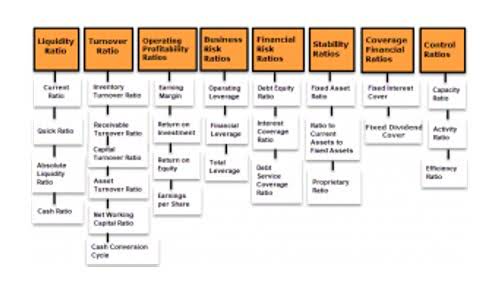
Even if fixed assets are unrestricted, though, they are still not cash nor are they usually easily converted to cash (liquid). Unrestricted funds usually go toward the operating expenses of the organization or to a particular project that the nonprofit picks. Assigned fund balance is also the “default” fund balance classification for all governmental funds except the general fund after nonspendable, restricted, and committed fund balance amounts have been identified. The definitions of the special revenue, capital projects, debt service, and permanent funds dictate that the resources within those funds represent, at a minimum, assigned portions of fund balance. After the nonspendable, restricted, and committed amounts of fund balance have been identified for these funds, if the remaining amount of fund balance represents a deficit, that amount must be reported as unassigned fund balance. The unassigned fund balance classification, as defined below, is used for special revenue, debt service, capital projects, or permanent funds only if the residual amount of fund balance is negative.

Resources
The status of unrestricted net assets significantly influences the presentation of financial statements, affecting key financial metrics and indicators reported by organizations. Changes in the levels of unrestricted assets can impact financial reporting accuracy and the assessment of organizational financial health. By maintaining a healthy reserve of unrestricted net assets, organizations can weather economic uncertainties, invest in capacity-building initiatives, and seize opportunities for growth.

What is fund accounting?
- For certain not-for-profits like churches and schools, cash balances are often much lower in the summer than in December and January, and cash needs should be considered.
- This content is for general information purposes only, and should not be used as a substitute for consultation with professional advisors.
- Since these providers may collect personal data like your IP address we allow you to block them here.
- For example, a donor might establish a scholarship fund where the principal remains intact, and only the interest or investment returns are used to award scholarships each year.
- The reclassification process involves making precise journal entries that reflect the change in the nature of the funds.
- As illustrated in the previous example, the rules regarding revenue recognition are one culprit, and make it particularly difficult to review financials throughout the year.
This underlines the critical need for organizations to prioritize effective unrestricted net assets financial management practices to safeguard their unrestricted net assets. By implementing robust financial oversight mechanisms, institutions can ensure transparency and accountability in the allocation and utilization of these funds. Failure to do so not only poses risks to the organization’s financial stability but also undermines its overall governance and credibility. Upholding sound financial management practices is paramount for organizations to fulfill their fiduciary responsibilities and maintain the trust of stakeholders. Common sources of these assets include general contributions from individuals or corporations that do not specify a particular use. Program service fees, such as those collected for educational courses or counseling services, also typically contribute to unrestricted funds.
7.1 What is a donor restriction?
The Net income from the date before gets closed to “Retained Earnings” which is often renamed to Unrestricted Net Assets. Founded in 1993, The Motley Fool is a financial services company dedicated to making the world smarter, happier, and richer. The Motley Fool reaches millions of people every month through our premium investing solutions, free guidance and market analysis on Fool.com, personal finance education, top-rated podcasts, and non-profit The Motley Fool Foundation.

A common misperception is that net assets equals the amount of resources the organization has immediately available to spend. For example, an organization devoted to animal rescue may receive a restricted donation to be spent on the care and feeding of crocodiles. How to Invoice as a Freelancer If the organization has no facilities or skilled staff devoted to crocodiles, it may be forced to spend more than the amount donated in order to fulfill the terms of the bequest.
Temporarily restricted assets usually are donated for a particular purpose and must be used by a particular date, such as within one year. An example might be a donation to the Red Cross for emergency aid delivered to Puerto Rico after a hurricane. Conversely, if your liabilities are greater than your assets, you have a negative net worth.

Nonprofits play a crucial role in addressing societal needs, often relying on various forms of funding to sustain their operations. Among these funds, unrestricted net assets stand out due to the flexibility they offer organizations in allocating resources where they are most needed. While this calculation is fairly straightforward, determining and applying insights about your net assets to your nonprofit’s unique situation what are retained earnings can be challenging. For best results, we recommend reaching out to nonprofit accountants like the team at Jitasa. Our expert financial professionals will ensure your unrestricted and restricted net assets are calculated accurately and properly applied to your budget, chart of accounts, financial statements, tax returns, and more.
- Then, fill in the gaps by allocating your unrestricted net assets to cover your overhead expenses and any outstanding program or project costs.
- Regular internal audits can help verify that funds are being used in accordance with donor intentions.
- As a result, if the restricted cash is expected to be used in the short-term, it is classified as a current asset.
- Nonprofits should regularly review and analyze their liabilities to make informed financial decisions and mitigate risks.
- Additionally, the Statement of Activities, similar to an income statement, outlines the organization’s revenues and expenses over a reporting period.
The assets are “unrestricted” because they can be used for general expenditures or any other operational purpose(s), i.e., the donor didn’t specify where or how their donation(s) are to be used. Net assets impact stakeholders such as donors and funders, board members, employees, and volunteers. Donors and funders may consider the organization’s net assets when making funding decisions, while board members rely on net assets for financial oversight and decision-making. Net assets are important because they reflect the financial stability and resources available to a nonprofit organization.

Leave A Comment